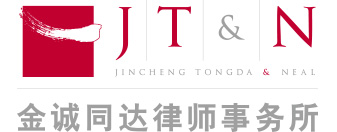In China, trademark infringement methods have undergone many changes in recent years, and the nature of infringement has become increasingly sophisticated and complicated. It would be difficult to cope with the myriad of complicated infringement cases by only applying single anti-counterfeiting raid actions or litigation. Therefore, it is very important to develop appropriate strategies according to the specific circumstances before taking legal action. However, even with a trademark strategy, implementation of the same is still a matter of great concern. In this column, the author discusses the importance of strategies when dealing with trademark infringement.

FRANK LIU
金诚同达律师事务所合伙人
Partner
Jincheng Tongda & Neal
CHOICE OF ACTION
Trademark strategies for coping with complicated infringement cases generally include a number of actions, such as sending a cease and desist letter, filing an online complaint, requesting an administrative raid action, filing for litigation, etc. Yet a trademark strategy shouldn’t be a mere enumeration of actions, but it needs to analyze the strengths and weaknesses of each action in terms of each specific case. This allows one to choose the appropriate primary action for the case and then allocate resources to such primary action. One could say that choosing the primary action determines the direction of the case’s development. If the wrong primary action is chosen, it is likely to cause irreparable loss to the overall case in the later stages.
For example, for an infringer who has registered a trademark maliciously, if it is necessary to revoke or file for a cancellation action against the registered trademark at the outset of the case, and so the primary action is to invalidate the trademark of the aforementioned infringer. After the primary action is successfully completed, follow-up actions will then go smoothly. If a lawsuit is filed rashly, when the trademark of the infringing party is valid, and then lost due to the fact that the trademark of the infringing party was still valid, then it may be very difficult to reverse this unfavorable situation in the later stages.
Therefore, when implementing a trademark strategy, one must choose the appropriate primary action for the specific case, and then arrange follow-up actions based on the primary action so as to achieve favourable results.
TIMING OF ACTION
After one has found clues that may indicate infringement, the principle of one acting, “the sooner, the better” doesn’t apply to all circumstances. On the contrary, early clues may be superficial in many cases, such as a small online shop or a store with a limited inventory of infringing products. At this time, if immediate action is taken rashly without analyzing the overall situation of a specific brand in the market, the real large-scale infringers or producers of the infringing products will often be alerted. This will create an obstacle for follow-up actions.
In order to implement effective trademark strategies, one must fully understand the situation of infringement in the market. Then, one must prepare for and forecast the possible responses of the infringer to any future actions taken by the rightful holder, and then choose appropriate actions with the proper timing based on this forecast. This is the only way to ensure that well-organized actions lead to the best results.
SPEED OF ACTION
Legal relationships in a trademark infringement case are different from ordinary contract-based relationships. Generally, the consequences of breaching a contract within a contract-based legal relationship do not change. It is relatively easy to find evidence of a breach of contract. However, infringers of trademark infringement cases are generally more vigilant. Once an infringer discovers or even suspects that the rightful holder has taken action, the infringer is likely to destroy evidence of the infringement by deleting online infringing information, and or removing or replacing infringing logos on infringing products. So, for trademark infringement cases, the speed of action is of great importance. Once an action has been determined, immediate implementation will be necessary. In a number of such cases where the decision-making process took too long and consequently, the opportunity to obtain evidence of the infringement or to crack down on the infringement on the spot was lost, resulting in an adverse situation in which follow-up actions and overall strategies could only be executed passively.
INTENSITY OF ACTION
According to the specifics of each infringement case, the intensity of action should also be adjusted. For example, the intensity of a lawyer’s cease and desist letter can also be adjusted according to the specific circumstances; where it may emphasize communication and negotiation, or the ceasing of infringement without compulsory demand for compensation, or the immediate ceasing of infringement within a specified time limit. It may also clarify the liability of compensation.
The same is also true for other actions, whose intensity can be adjusted according to the specific circumstances. So, after the primary actions have been chosen and the action plan has been determined, the best results can be achieved by adjusting the intensity of different actions according to the overall strategy and the specific circumstances of the case.
As mentioned above, the specific implementation of strategies formulated for a particular brand and a particular market requires comprehensive consideration from various perspectives, such as choice of action, timing of action, speed of action and intensity of action. Meanwhile, it is also necessary to consider how to respond when the infringing party fights back, and to take advantage of any errors that the infringing party may make. The strategy is not a simple list of infringement facts and actions to be taken, but rather a dynamic game in which the infringer actively participates. Strategies cannot be successfully implemented unless one fully understands the infringing party and accumulates practical experiences. If the strategy is not implemented effectively, no matter how well written, it will only become a futile and useless undertaking.
Frank Liu is a partner at Jincheng Tongda & Neal
中国上海浦东新区世纪大道201号
渣打银行大厦9层 邮编: 200120
9th Floor, Standard Chartered Tower
No. 201 Century Avenue, Shanghai 200120, China
电话 Tel: +86 21 6079 5656
传真 Fax: +86 21 6079 8759
电子信箱 E-mail:
frankliu@jtnfa.com
www.jtnfa.com






















